
Daniel S. Schiff
@dschiff.bsky.social
Assist. Professor @purduepolsci & Co-Director of Governance & Responsible AI Lab (GRAIL). Studying #AI policy and #AIEthics. Secretary for @IEEE 7010 standard.
5/7 📈 Finding 2 (The Catch): This public influence ONLY holds for the innovation frame. When the public discusses AI's economic potential, policymakers listen. When the public discusses AI ethics or security, we see no statistically significant influence on policymakers.
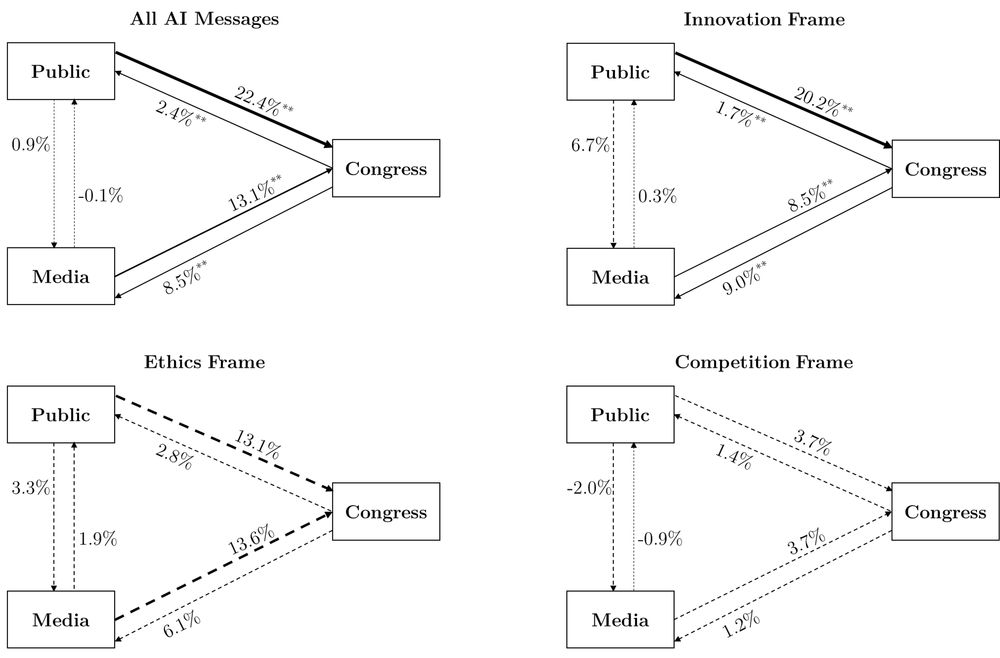
August 4, 2025 at 1:57 PM
5/7 📈 Finding 2 (The Catch): This public influence ONLY holds for the innovation frame. When the public discusses AI's economic potential, policymakers listen. When the public discusses AI ethics or security, we see no statistically significant influence on policymakers.
4/7 📈 Finding 1: Public attention does predict policymaker attention.
The time-series analysis (ARIMA + VAR) shows that a one standard deviation increase in public tweets about AI is associated with a 22.4% increase in Congressional messaging on AI that same week.
The time-series analysis (ARIMA + VAR) shows that a one standard deviation increase in public tweets about AI is associated with a 22.4% increase in Congressional messaging on AI that same week.
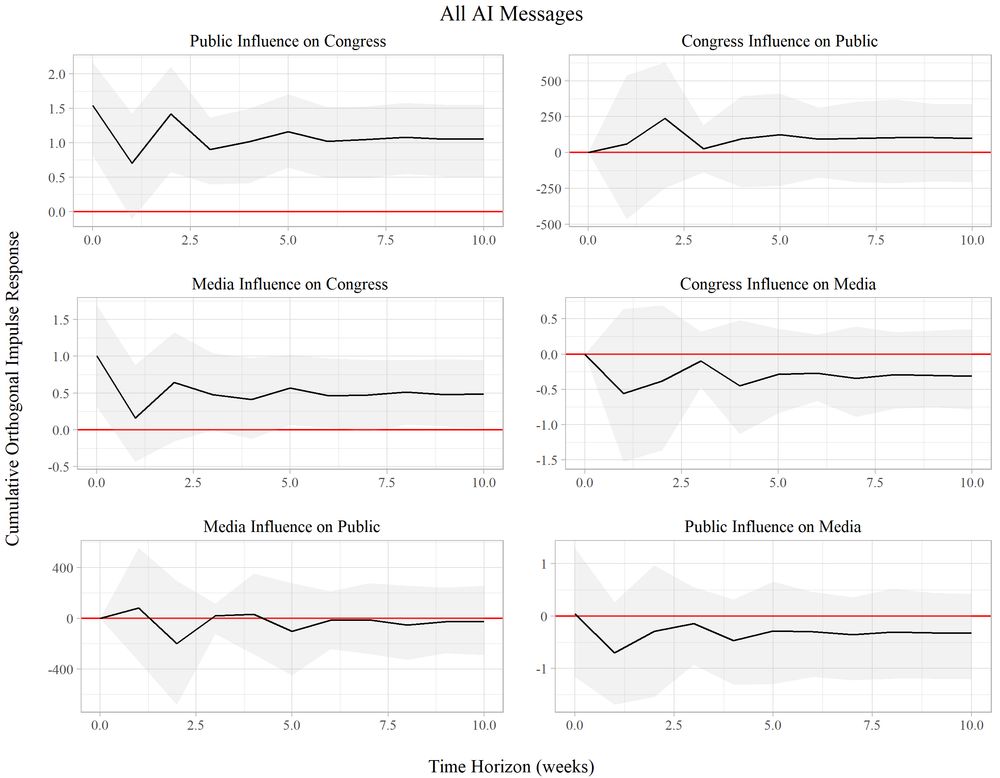
August 4, 2025 at 1:57 PM
4/7 📈 Finding 1: Public attention does predict policymaker attention.
The time-series analysis (ARIMA + VAR) shows that a one standard deviation increase in public tweets about AI is associated with a 22.4% increase in Congressional messaging on AI that same week.
The time-series analysis (ARIMA + VAR) shows that a one standard deviation increase in public tweets about AI is associated with a 22.4% increase in Congressional messaging on AI that same week.
2/7 I focused on three dominant ways people frame AI:
📈 Innovation: AI as a driver of economic growth & productivity.
🙏 Ethics: AI's impact on fairness, rights, bias, and safety.
⚔️ Competition: AI in the context of the US-China race.
📈 Innovation: AI as a driver of economic growth & productivity.
🙏 Ethics: AI's impact on fairness, rights, bias, and safety.
⚔️ Competition: AI in the context of the US-China race.
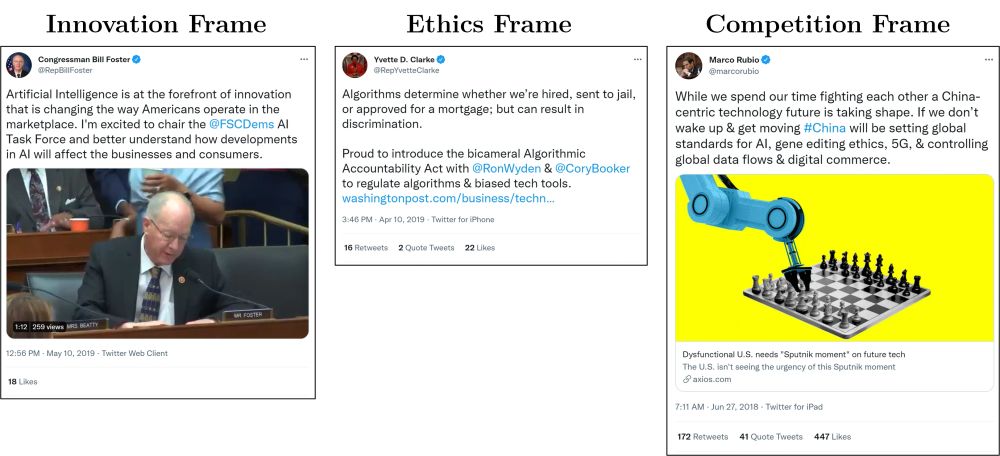
August 4, 2025 at 1:57 PM
2/7 I focused on three dominant ways people frame AI:
📈 Innovation: AI as a driver of economic growth & productivity.
🙏 Ethics: AI's impact on fairness, rights, bias, and safety.
⚔️ Competition: AI in the context of the US-China race.
📈 Innovation: AI as a driver of economic growth & productivity.
🙏 Ethics: AI's impact on fairness, rights, bias, and safety.
⚔️ Competition: AI in the context of the US-China race.
8/12 Crucially, this latter effect was especially pronounced for non-White students, suggesting peer interaction can be a key driver of equity-related development.
Another note: Women have higher SR scores than men consistently
Another note: Women have higher SR scores than men consistently
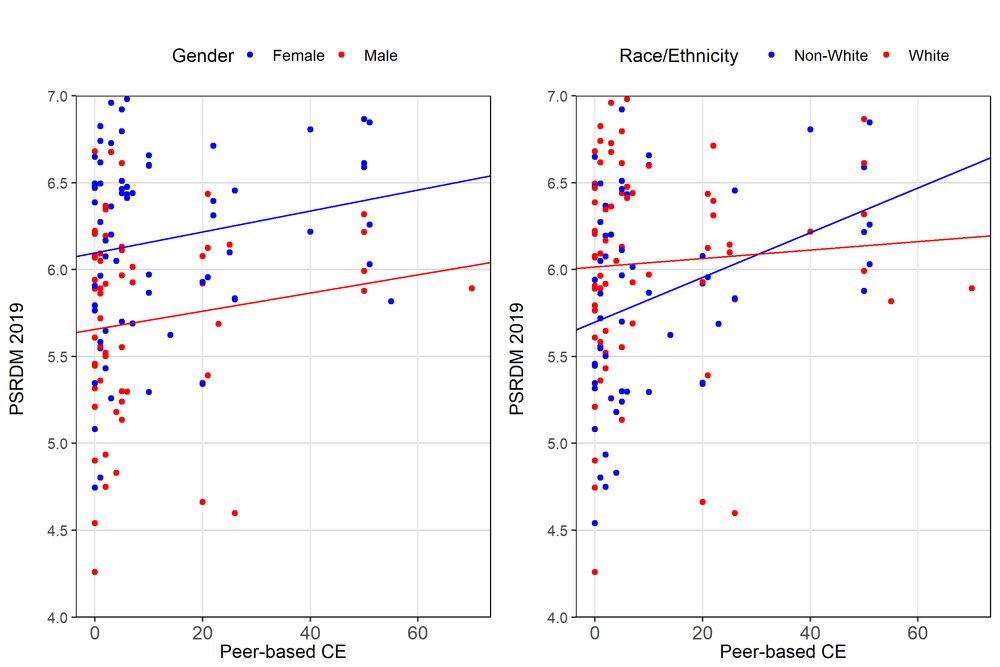
July 11, 2025 at 2:27 PM
8/12 Crucially, this latter effect was especially pronounced for non-White students, suggesting peer interaction can be a key driver of equity-related development.
Another note: Women have higher SR scores than men consistently
Another note: Women have higher SR scores than men consistently
4/12 Worse, when asked about future job priorities, the importance of "salary" went up, while the importance of "helping people" went down.
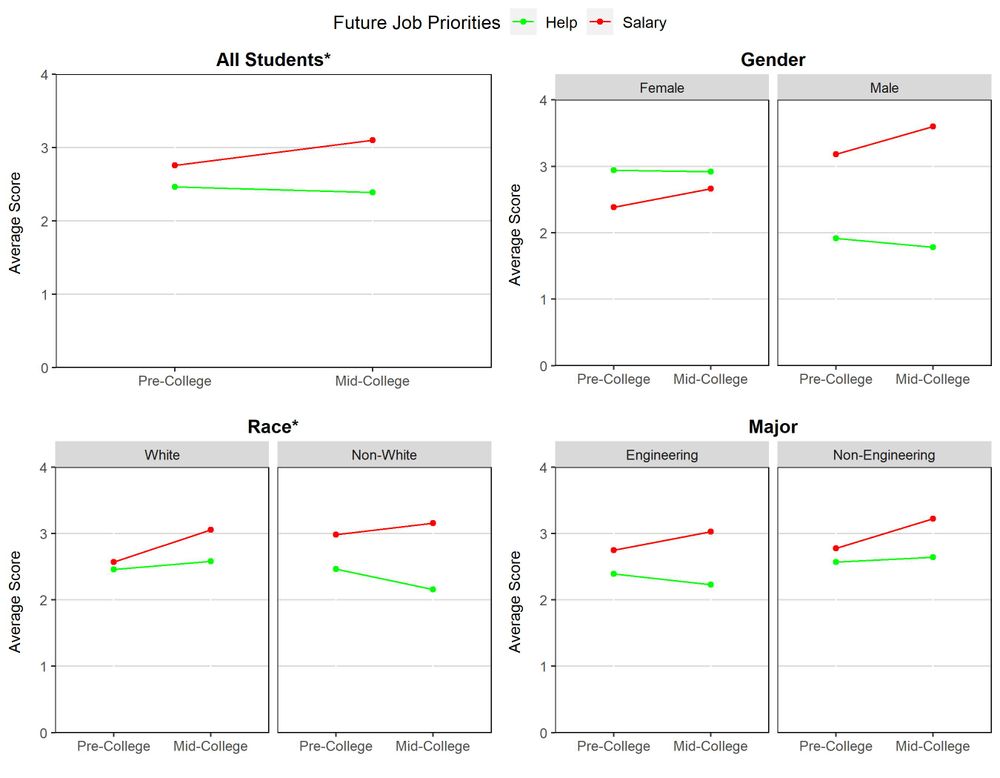
July 11, 2025 at 2:27 PM
4/12 Worse, when asked about future job priorities, the importance of "salary" went up, while the importance of "helping people" went down.
3/12 We used the Generalized Professional Responsibility Assessment (GPRA) to measure changes in their attitudes.
📉 Finding 1: Stagnant attitudes & shifting priorities.
Over two years, students' social responsibility scores remained flat.
📉 Finding 1: Stagnant attitudes & shifting priorities.
Over two years, students' social responsibility scores remained flat.

July 11, 2025 at 2:27 PM
3/12 We used the Generalized Professional Responsibility Assessment (GPRA) to measure changes in their attitudes.
📉 Finding 1: Stagnant attitudes & shifting priorities.
Over two years, students' social responsibility scores remained flat.
📉 Finding 1: Stagnant attitudes & shifting priorities.
Over two years, students' social responsibility scores remained flat.

